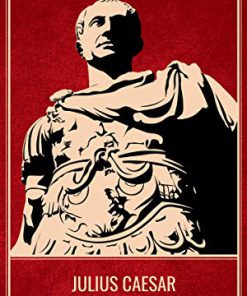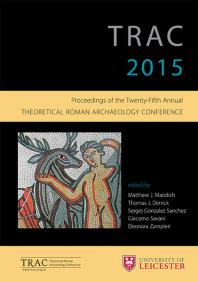Politics in the Monuments of Pompey the Great and Julius Caesar 1st Edition by Eleonora Zampieri 1000778037 9781000778038
$50.00 Original price was: $50.00.$25.00Current price is: $25.00.
Politics in the Monuments of Pompey the Great and Julius Caesar 1st Edition by Eleonora Zampieri – Ebook PDF Instant Download/Delivery: 1000778037, 9781000778038
Full download Politics in the Monuments of Pompey the Great and Julius Caesar 1st Edition after payment

Product details:
ISBN 10: 1000778037
ISBN 13: 9781000778038
Author: Eleonora Zampieri
This book explores the diachronic development of the ideological content of Pompey and Caesar’s monuments in Rome, emphasising the importance of the late Republican period as a precursor to imperial propaganda through architecture. In the final years of the Roman Republic, individuals such as Pompey the Great and Julius Caesar exploited the communicative power of architecture. The former promoted the first and largest stone theatre in Rome; the latter started comprehensive town-planning projects that arguably verged on the utopian. Yet the study of the politics expressed by these monuments and how complex late Republican politics shaped the monuments themselves has attracted less attention than that of subsequent imperial architecture. Zampieri addresses this imbalance, exploring the ideological meaning of late Republican monuments and highlighting that monuments were fluid, adaptable entities, even in the lifespan of a single individual. Accompanied by detailed maps and images, this volume shows how late Republican architecture should be considered an important source for understanding politics of this period. Politics in the Monuments of Pompey the Great and Julius Caesar will be of use to anyone working on the politics and social world of the late Roman Republic, and on Roman architecture and patronage.
Politics in the Monuments of Pompey the Great and Julius Caesar 1st Table of contents:
1. Pompey and Caesar
2. Pompeian and Caesarian monuments in Rome
1 The Protagonists and Their Ideas
1.1 Foreword: Propaganda in Antiquity
1.2 ‘ita sullaturit animus eius et proscripturit iam diu’ (Cic., Att., 9, 10, 6): Pompey
1.2.1 Sulla
1.2.2 Alexander the Great
1.2.3 The Gods: Venus Victrix
1.2.4 The Gods: Hercules
1.2.5 The Gods: Minerva
1.2.6 The Gods: Dionysus
1.2.7 Felicitas
1.2.8 Scipio Aemilianus (and Africanus)?
1.3 ‘[…] nam Caesari multos Marios inesse’ (Suet., Iul., 1, 1): Caesar
1.3.1 Marius
1.3.2 The Gracchi Brothers
1.3.3 Scipio Aemilianus (and Africanus)
1.3.4 Furius Camillus
1.3.5 Romulus
1.3.6 Servius Tullius
1.3.7 Other Models: Ancus Marcius and Numa Pompilius
1.3.8 The Gods: Venus
1.3.9 The Gods: Veiovis – Iuppiter
1.3.10 The Gods: Quirinus
1.3.11 Clementia et Concordia
1.3.12 Felicitas
1.4 Final Remarks
2 The Rising Sun: Pompey’s Monuments and His Three Triumphs
2.1 Imago Alexandri? The Hercules Pompeianus
2.2 Pompey’s Temple of Minerva
2.3 Theatrum Lapideum
2.3.1 The Temple of Venus Victrix
2.3.2 The Presence (or not) of a Scaenae Frons
2.3.3 The Decorative Programme
2.3.4 A Place for a Hero?
2.3.5 A Gymnasium for Promenades and Otium
2.3.6 Further Interpretations – A Statesman’s Project
2.3.7 Different Levels of Messages
2.4 Preliminary Conclusions
3 Pacata Gallia? Caesar keeps an eye on Rome
3.1 The ‘Enlargement of the Roman Forum’ (Forum of Caesar)
3.1.1 A ‘new’ Caesarian phase
3.2 The Atrium Libertatis
3.3 A New Building for the Comitia: The Saepta
3.4 Basilica Aemilia, Basilica Iulia
3.5 Preliminary Conclusions
4 After the war, a new Rome
4.1 The Temple of Felicitas
4.2 The Temple of Quirinus on the Quirinal Hill
4.3 Preliminary Conclusions
5 The building affairs of Mr. Julius Caesar
5.1 The Forum of Caesar
5.1.1 Decoration: Griffins
5.1.2 Decoration: The Meander
5.1.3 Aedes Veneris Genetricis
5.1.4 Works of Art in the Temple: Statues and Gems
5.1.5 Works of Art in the Temple: The Pinakes of Ajax and Medea
5.1.6 Works of Art in the Forum: Statues
5.1.7 Changing Propaganda
5.2 Caesar’s Temporary Stadium and Naumachia
5.3 The Circus Maximus
5.4 A Plan for the City: The Lex Iulia de Urbe augenda, ornanda et instruenda
5.5 Jupiter or Apollo? The Theatre of Caesar
5.6 The Temple of Vesta and a New Platform for the Tribunes
5.7 Preliminary Conclusions
Conclusions: Let the City Speak
6.1 ‘[…] urbis o putissimei, / socer generque […]’ (Catull., 29, 23–24)
6.1.1 Pompey, Successful General, and Primus Inter Pares
6.1.2 Caesar, Moderate Popularis, and Civil War Victor
6.2 The Power of Architecture
6.2.1 A ‘Caesarian’ Forum
6.2.2 A ‘Triumph’ for Propaganda
6.3 Final Remarks
6.4 Conclusions: Rome as a Forum for Propaganda
Appendix A: Maps
Appendix B: Chronology Table
Bibliography
Index
People also search for Politics in the Monuments of Pompey the Great and Julius Caesar 1st:
political monuments
pompeii monuments
politics in the count of monte cristo
politics in mesopotamia
Tags:
Eleonora Zampieri,Politics,Monuments
You may also like…
Children s Books Science Nature How It Works
National Monuments of the USA 1st Edition Cameron Walker 0711265496 9780711265493
Politics & Philosophy - Politics
Uncategorized
Biography & Autobiography - Historical
Julius Caesar Rome s Greatest Warlord 3rd Edition by Simon Elliott ISBN 1612007090 9781612007090
Uncategorized
Politics & Philosophy - Government & Politics
History - Ancient History
Dynasty The Rise and Fall of the House of Caesar 1st Edition Holland Tom
History - Archaeology











